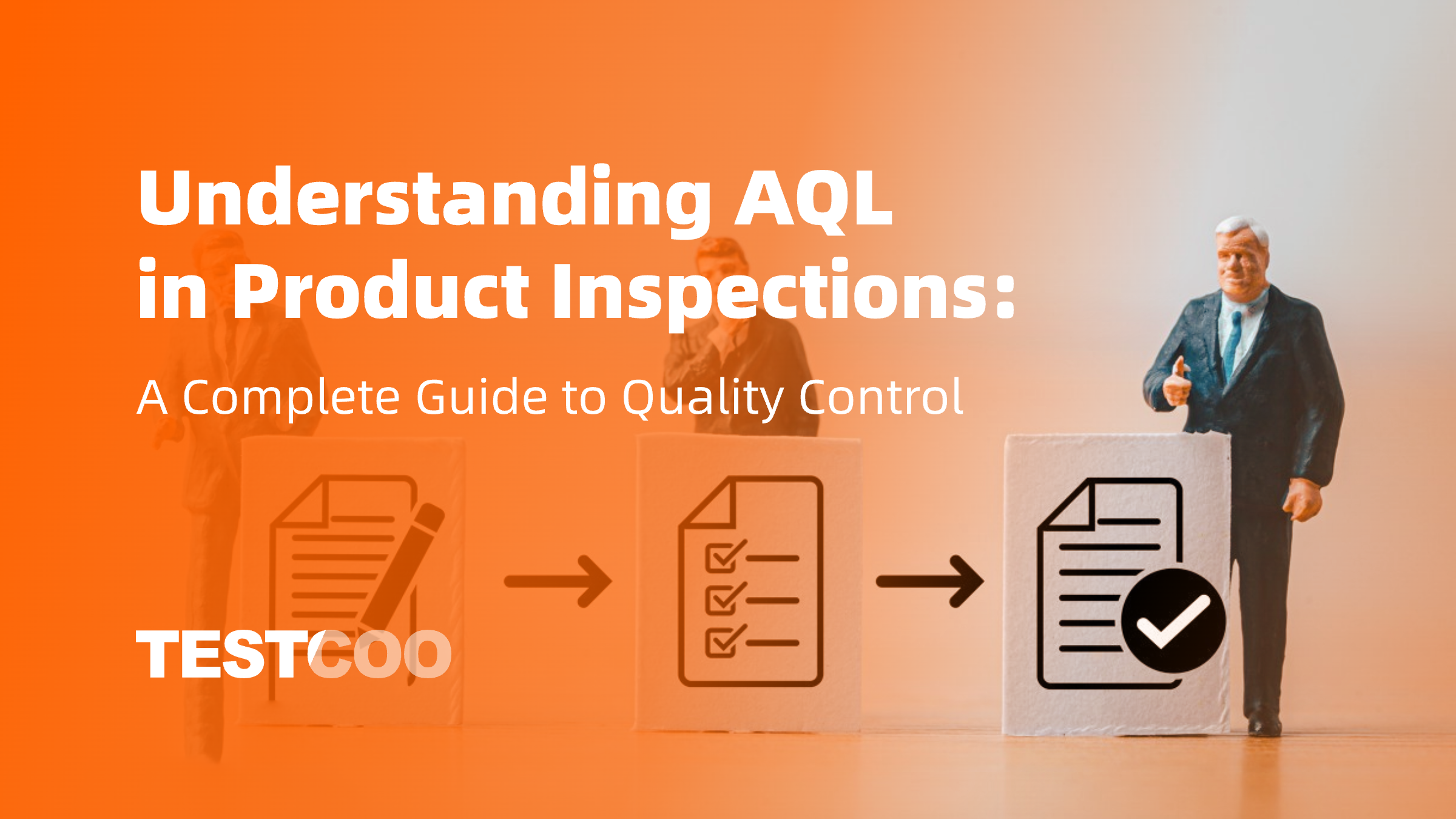All About Soft Goods Quality Control in Supply Chain

In today’s global economy, the manufacturing and distribution of soft goods—such as textiles, apparel, and home furnishings—are complex processes that span multiple countries and involve a variety of suppliers and manufacturers. Ensuring that these products meet high standards of quality is crucial for maintaining brand reputation, customer satisfaction, and regulatory compliance. This is where soft goods quality control?comes into play, serving as a critical component of the supply chain.
In this blog, we will explore the importance of quality control in the soft goods industry, the challenges faced in maintaining quality across global supply chains, and best practices for implementing effective quality control processes.
Understanding Soft Goods and Their Importance in Supply Chain
Soft goods, also known as consumer textiles, encompass a broad range of products including clothing, bed linens, towels, upholstery, and other fabric-based items. These products are integral to everyday life, and their quality directly impacts consumer satisfaction. Poor-quality soft goods can lead to customer complaints, product returns, and damage to a brand’s reputation. Therefore, maintaining high standards of quality throughout the production and distribution process is essential.
In the context of supply chains, soft goods present unique challenges. Unlike hard goods, which are typically durable and less prone to damage, soft goods are more susceptible to defects such as tearing, fading, and misalignment during manufacturing and handling. This makes rigorous quality control measures a necessity to ensure that the final product delivered to consumers is free from defects and meets all required standards.
The Role of Quality Control in Soft Goods Supply Chain
Quality control (QC) in soft goods?supply chains involves a series of systematic processes to ensure that products meet specified quality standards before they reach the market. These processes include inspection, testing, and verification at various stages of production and distribution. The primary goal of quality control is to identify and rectify defects or deviations from quality standards early in the supply chain, thereby minimizing the risk of faulty products reaching consumers.
Key Components of Quality Control in Soft Goods:
- Raw Material Inspection:?The quality of raw materials, such as fabrics, threads, and dyes, plays a crucial role in the overall quality of soft goods. Inspecting raw materials upon receipt helps identify any defects or inconsistencies before they are used in production. This step is vital for preventing quality issues later in the manufacturing process.
- During Production Inspection:?During production, it is essential to monitor various stages of the manufacturing process to ensure that quality standards are being met. This may involve checking the accuracy of cutting patterns, stitching quality, seam strength, and other critical factors that influence the final product's quality.
- Final Product Inspection:?Once the product is complete, a thorough inspection is conducted to verify that it meets all specified quality standards. This includes checking for defects such as loose threads, stains, color mismatches, and incorrect sizing. Final product inspection?is the last line of defense before the product is shipped to retailers or customers.
- Performance Testing:?In addition to visual inspections, soft goods often undergo performance testing to assess their durability, colorfastness, shrinkage, and resistance to wear and tear. These tests help ensure that the products will perform as expected in real-world use.
- Packaging Inspection:?Proper packaging is crucial to protecting soft goods during transportation and storage. Quality control measures should include an inspection of packaging materials and methods to ensure that they adequately protect the product from damage.
Read more: Garment Defects in Apparel and Textile Industry
Challenges in Quality Control for Soft Goods
Maintaining consistent quality in soft goods supply chains is challenging due to several factors. These challenges can arise from the complexity of global supply chains, the variability of raw materials, and the intricacies of manufacturing processes. Here are some of the key challenges:
1. Supplier Variability
Soft goods supply chains often involve multiple suppliers located in different parts of the world. Each supplier may have different quality standards, production methods, and materials, leading to variability in the final product's quality. Ensuring consistency across multiple suppliers requires stringent quality control measures and effective communication.
2. Complex Manufacturing Processes
The manufacturing of soft goods involves multiple stages, from cutting and sewing to dyeing and finishing. Each stage presents opportunities for defects to occur, making it difficult to maintain consistent quality throughout the process. Quality control teams must be vigilant in monitoring each step to catch any issues as they arise.
3. Environmental Factors
Soft goods are particularly susceptible to environmental factors such as humidity, temperature, and light exposure. These factors can affect the quality of fabrics, leading to issues like fading, shrinkage, and material degradation. Quality control measures must account for these variables to ensure that the products meet quality standards.
4. Regulatory Compliance
Different countries have varying regulations regarding the safety, labeling, and quality of soft goods. Ensuring compliance with these regulations adds another layer of complexity to quality control processes. Non-compliance can result in legal penalties, product recalls, and damage to the brand’s reputation.
5. Cost Constraints
Implementing comprehensive quality control measures can be costly, particularly for companies operating on thin margins. Balancing the need for quality control with budget constraints is a constant challenge for soft goods manufacturers and suppliers.
Best Practices for Effective Quality Control in Soft Goods Supply Chain
Despite the challenges, there are several best practices that can help companies implement effective quality control processes in soft goods supply chains. These practices focus on proactive measures, continuous improvement, and leveraging technology to enhance quality control efforts.
1. Establish Clear Quality Standards
The foundation of any effective quality control program is the establishment of clear, measurable quality standards. These standards should be documented and communicated to all suppliers and manufacturers involved in the supply chain. Having clear standards ensures that everyone is aligned on the quality expectations for the final product.
2. Conduct Supplier Audits
Regular audits of suppliers?are essential for ensuring that they are adhering to the agreed-upon quality standards. Audits can include on-site inspections, review of production processes, and assessments of the supplier’s quality control measures. Conducting regular audits helps identify potential issues before they impact the final product.
3. Implement Real-Time Monitoring
Leveraging technology to implement real-time monitoring of the manufacturing process can significantly enhance quality control efforts. This can include using sensors to monitor environmental conditions, automated systems to track production data, and digital platforms to facilitate communication between suppliers and quality control teams. Real-time monitoring allows for quicker identification and resolution of quality issues.
4. Train and Educate Employees
Quality control is a team effort that requires the involvement of all employees in the supply chain. Providing regular training and education on quality standards, inspection techniques, and problem-solving skills can empower employees to take ownership of quality control. A well-trained workforce is better equipped to identify and address quality issues before they escalate.
5. Foster Collaboration Between Stakeholders
Effective quality control requires collaboration between all stakeholders in the supply chain, including suppliers, manufacturers, quality control teams, and customers. Regular communication and collaboration help ensure that everyone is working towards the same quality goals. This can be facilitated through regular meetings, shared digital platforms, and clear channels of communication.
6. Emphasize Continuous Improvement
Quality control should not be a one-time effort but an ongoing process of continuous improvement. Companies should regularly review their quality control processes, gather feedback from stakeholders, and make necessary adjustments to enhance efficiency and effectiveness. Emphasizing continuous improvement helps ensure that quality control processes evolve with changing market conditions and customer expectations.
The Future of Quality Control in Soft Goods
As technology continues to advance, the future of quality control in soft goods supply chains looks promising. Innovations such as artificial intelligence (AI), machine learning, and blockchain are poised to revolutionize quality control processes, making them more efficient, accurate, and transparent.
Artificial Intelligence and Machine Learning
AI and machine learning algorithms can be used to analyze vast amounts of production data in real-time, identifying patterns and predicting potential quality issues before they occur. These technologies can also enhance the accuracy of inspections by automating the detection of defects that may be missed by human inspectors.
Blockchain for Transparency
Blockchain technology can provide greater transparency and traceability in supply chains, allowing companies to track the journey of soft goods from raw material sourcing to final delivery. This level of transparency can help ensure that quality control measures are consistently applied throughout the supply chain.
Sustainable Quality Control
As consumers become more environmentally conscious, there is increasing demand for sustainable soft goods. Quality control processes will need to adapt to include assessments of environmental impact, ethical sourcing, and sustainability. This shift towards sustainable quality control will not only help protect the environment but also enhance brand reputation and customer loyalty.
Testcoo can help you in the Soft Goods Quality Control
As a third-party inspection company, we understand that quality control?is a critical component of soft goods supply chains, ensuring that products meet the highest standards before they reach consumers. Our role is to help companies navigate the complexities of global supply chains by providing independent and unbiased inspections that guarantee the integrity and quality of their soft goods.
At Testcoo, our mission is to be your trusted partner in safeguarding the quality of your soft goods, ensuring that every product that reaches your customers is a testament to your commitment to excellence.
Free Sample Report Performance Quality Control
Download a sample report to keep control of your supply chain!
Featured Articles
 AQL Table | How to Read It
AQL Table | How to Read It TOP 10 Common Defects in Garments Quality Inspection
TOP 10 Common Defects in Garments Quality Inspection Product Packaging and Shipment Label requirements for Amazon FBA
Product Packaging and Shipment Label requirements for Amazon FBA What Is ASTM-F2413-18? Protective Footwear Standard
What Is ASTM-F2413-18? Protective Footwear Standard How to Conduct Third-Party Quality Control Inspections for Electric Scooters
How to Conduct Third-Party Quality Control Inspections for Electric Scooters SMETA Audit-What is SMETA Audit?
SMETA Audit-What is SMETA Audit? TESTCOO Supplier Verification/Certification Service SLCP, Higg FEM, GRS, GOTS
TESTCOO Supplier Verification/Certification Service SLCP, Higg FEM, GRS, GOTS Quality Control Inspection Company in China
Quality Control Inspection Company in China What is Quality Inspection? A Complete Guide
What is Quality Inspection? A Complete Guide Guidelines for Product Inspection in India
Guidelines for Product Inspection in India
Category
- Production Inspection Service
- Factory Audit
- Softline Inspection
- Hardline Inspection
- Electrics Inspection
- Certification
- Checklist
- Manufacturers
- Quality Assurance Basics
- Products Recall
- AQL
- Guidence and Standard
- News
- Supplier Management
- Amazon
- Protective Equipment
- e-commerce quality control
- Indian Manufacturing
- Soft Goods Quality Control
- Supply Chain Management
- Supply Chain Resilience
- E-Commerce Quality Control
- ISO 2859
- Supply Chain Optimization
- Garment Industry
- Higg Index




